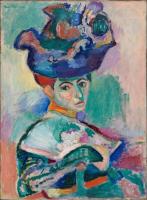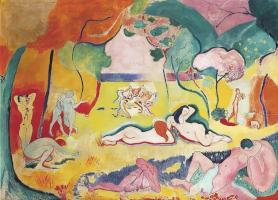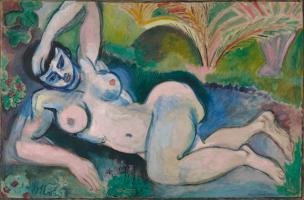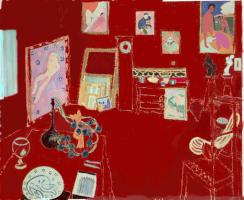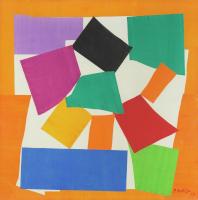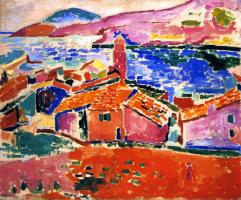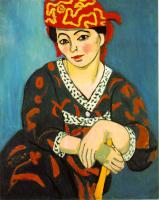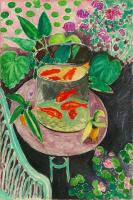Henri Matisse
Matisse had an orderly and brilliant academic mind; he would probably have been a lawyer if he had not turned to painting to amuse himself during a period of convalescence from appendicitis. As a result, the world of art gained one of its most outstanding and admired figures of the twentieth century.
What began as a diversion for Matisse became an obsession, and he gave up his legal training and joined the studio of Gustave Moreau in Paris. He was influenced by the Impressionists, and particularly by the work of Cezanne. But he broke away from their gentle studies in light, and by 1905 had become the leader of a group of artists known as Les Fauves, the wild beasts, because of their use of violent explosive colour and aggressively rough paint textures. He was also much drawn to the formality, the inventive patterns and the colours of Islamic art, particularly after a visit to the great Islamic exposition in Munich in 1910. This influence can be seen in the pure, contrasting colours and shapes of most of his work. He turned his talent to sculpture and printmaking, books, murals and designs for the theatre as well as painting.
His subjects were mainly domestic interiors, scenes framed by windows, and — above all — the female form. He said, ‘What interests me most is neither still life nor landscape, but the human figure. It is through it that I best succeed in expressing the almost religious feeling I have towards life.’
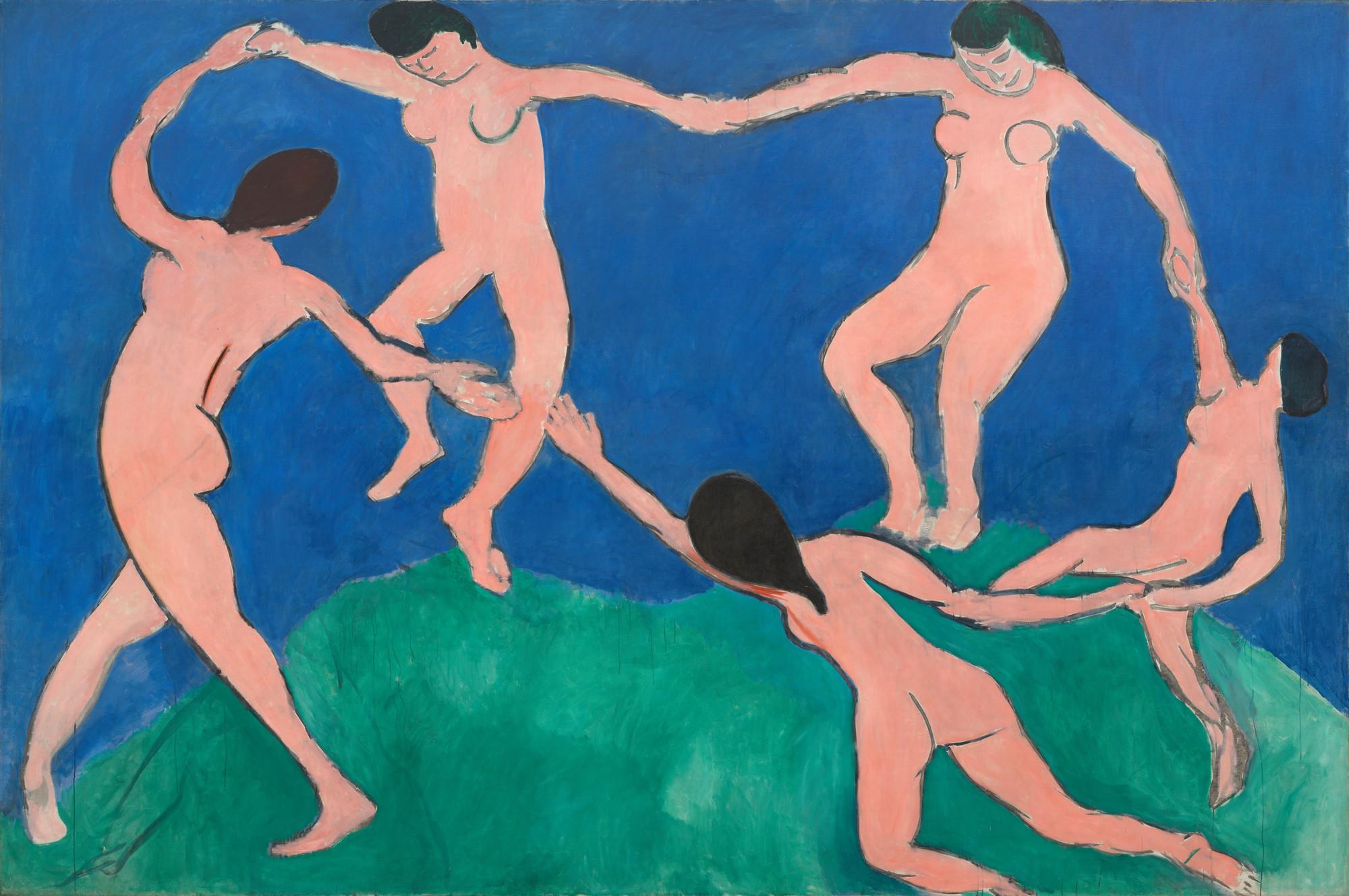 Dance and Music were two decorative panels produced for the Russian collector
Sergei Shchukin, which explains why they are now, after confiscation from
private ownership, in the Russian state collections. But Matisse had initially
produced for Shchukin’s inspection another full-scale version of Dance — over
eight-and-a-half feet high and nearly thirteen feet wide — and this is the one
that is now in the Museum of Modern Art in New York. In it Matisse probably
used as his starting point a ring of dancers from the background of his own
painting Bonheur de vivre. 1909 was the year Diaghilev and the Russian ballet
arrived in Paris, and dance was a topical subject. The figures are dancing on
a hill (a traditional site for ancient mystic rites and ceremonies), but it is
as if they are afloat in the blazing blue sky, their feet barely touching the
ground.
Dance and Music were two decorative panels produced for the Russian collector
Sergei Shchukin, which explains why they are now, after confiscation from
private ownership, in the Russian state collections. But Matisse had initially
produced for Shchukin’s inspection another full-scale version of Dance — over
eight-and-a-half feet high and nearly thirteen feet wide — and this is the one
that is now in the Museum of Modern Art in New York. In it Matisse probably
used as his starting point a ring of dancers from the background of his own
painting Bonheur de vivre. 1909 was the year Diaghilev and the Russian ballet
arrived in Paris, and dance was a topical subject. The figures are dancing on
a hill (a traditional site for ancient mystic rites and ceremonies), but it is
as if they are afloat in the blazing blue sky, their feet barely touching the
ground.
Their five naked bodies, linked in a circle, are painted in clear flat colour without shadows, and the simplified outlines of the figures stand out very strongly against the background. They are drawn without detail, but the movement of their limbs and twisting bodies is realistic and full of life. The vibrant blue and green of the sky and the grass are perfectly balanced and extraordinarily intense. The total effect of this striking painting is one of primitive joy and exhilaration, communicating the joy Matisse derived from brilliant colour and dramatic forms.
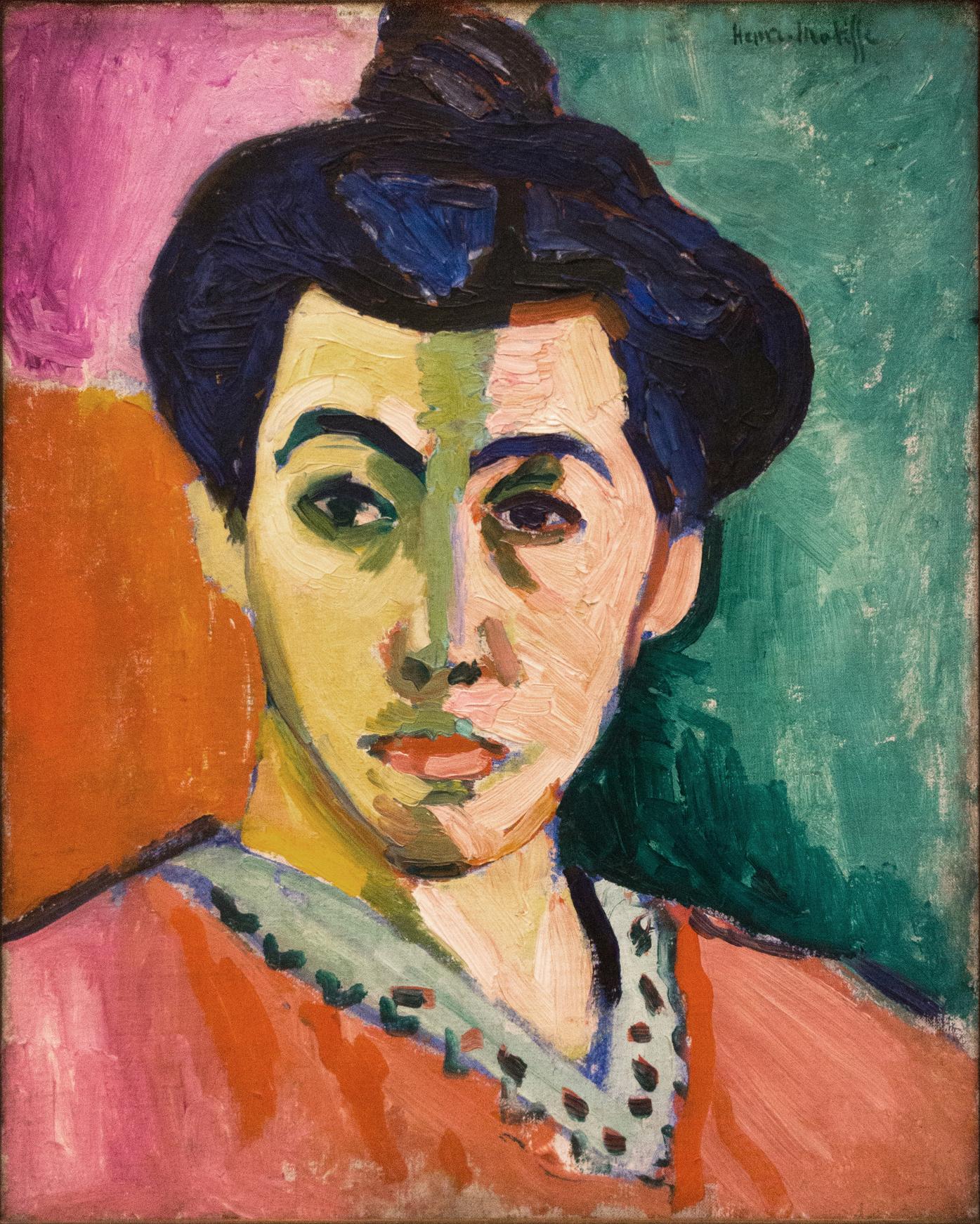 The painting depicts the artist’s wife, Amelie. The green stripe down the
center of her face acts as an artificial shadow line and divides the face in
the conventional portraiture style, giving it a dark and a light side.
The painting depicts the artist’s wife, Amelie. The green stripe down the
center of her face acts as an artificial shadow line and divides the face in
the conventional portraiture style, giving it a dark and a light side.
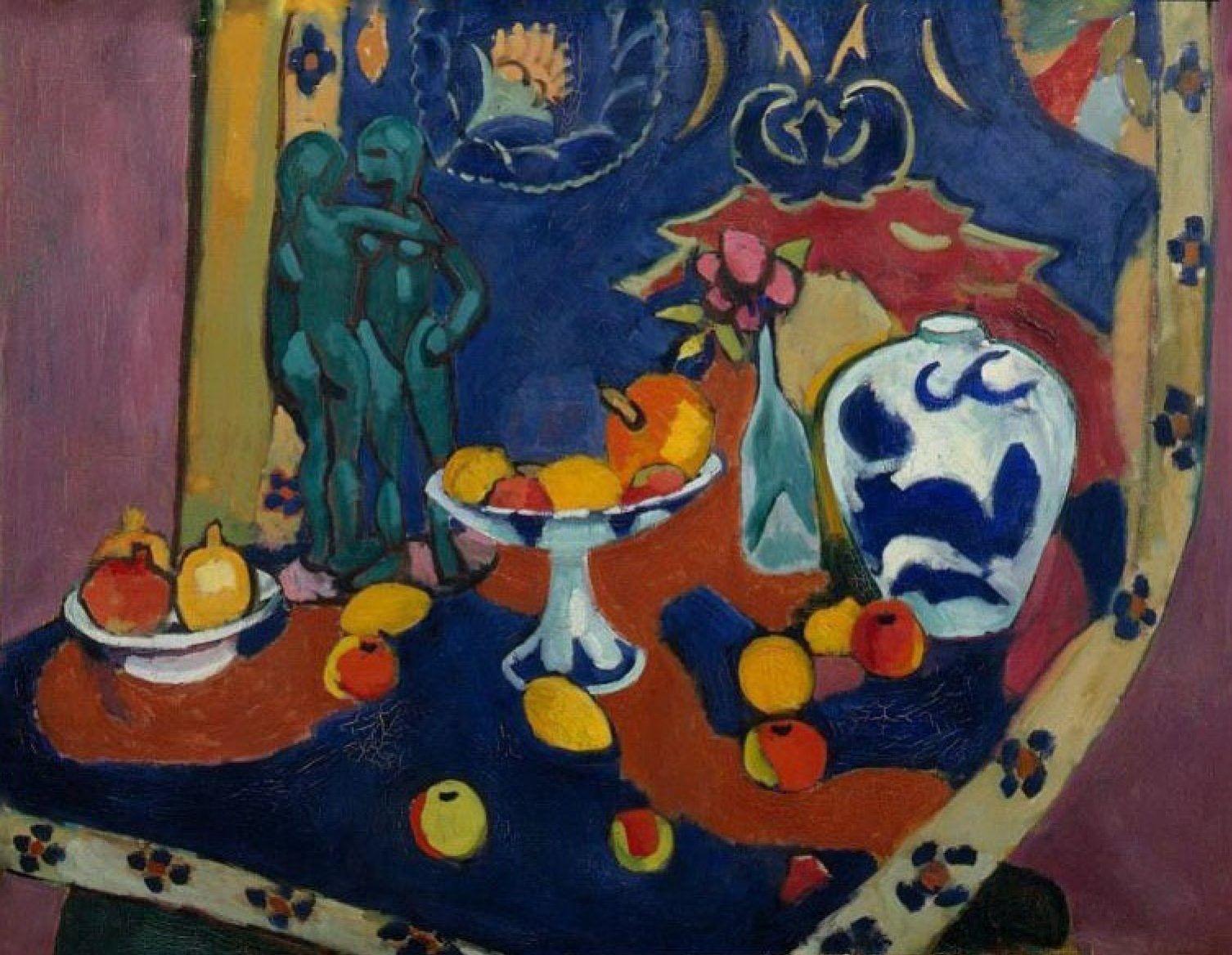 Matisse allowed the colours of these objects to dictate their final
composition. Warm, glowing fruit and bright ceramics leap out from the cool
background, at the same time remaining central to the arrangement. Matisse
rejoiced in the use of newly invented pigments and the restoration of colour’s
emotive power.
Matisse allowed the colours of these objects to dictate their final
composition. Warm, glowing fruit and bright ceramics leap out from the cool
background, at the same time remaining central to the arrangement. Matisse
rejoiced in the use of newly invented pigments and the restoration of colour’s
emotive power.


